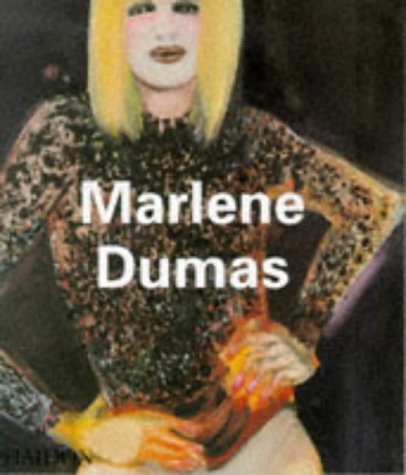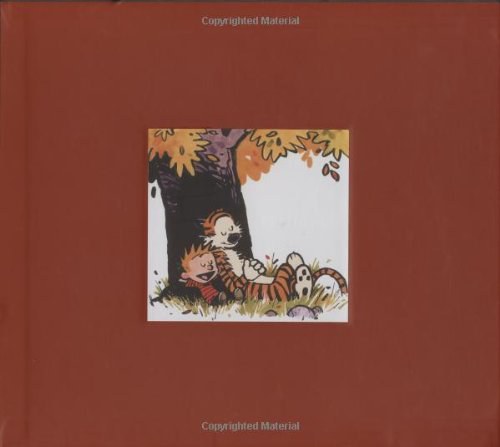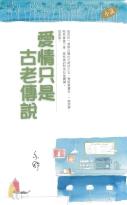
Eugene Y·Wang《Shaping the Lotus Sutra》
作者:Eugene Y·Wang
出版社:University of Washington Press
出版年:2007-2-15
评分:0.0
ISBN:9780295986852
所属分类:艺术音乐
书刊介绍
内容简介
The Lotus Sutra has been the most widely read and most revered Buddhist scripture in East Asia since its translation in the third century. The miracles and parables in the "king of sutras" inspired a variety of images in China, in particular the sweeping compositions known as transformation tableaux that developed between the seventh and ninth centuries. Surviving examples in murals painted on cave walls or carved in relief on Buddhist monuments depict celestial journeys, bodily metamorphoses, cycles of rebirth, and the achievement of nirvana. Yet the cosmos revealed in these tableaux is strikingly different from that found in the text of the sutra. Shaping the Lotus Sutra explores this visual world.
Challenging long-held assumptions about Buddhist art, Eugene Wang treats it as a window to an animated and spirited world. Rather than focus on individual murals as isolated compositions, Wang views the entire body of pictures adorning a cave shrine or a pagoda as a visual mapping of an imaginary topography that encompasses different temporal and spatial domains. He demonstrates that the text of the Lotus Sutra does not fully explain the pictures and that a picture, or a series of them, constitutes its own "text." In exploring how religious pictures sublimate cultural aspirations, he shows that they can serve both political and religious agendas and that different social forces can co-exist within the same visual program. These pictures inspired meditative journeys through sophisticated formal devices such as mirroring, mapping, and spatial programming - analytical categories newly identified by Wang.
The book examines murals in cave shrines at Binglingsi and Dunhuang in northwestern China and relief sculptures in the grottoes of Yungang in Shanxi, on stelae from Sichuan, and on the Dragon-and-Tiger pagoda in Shandong, among other sites. By tracing formal impulses in medieval Chinese picture-making, such as topographic mapping and pictorial illusionism, the author pieces together a wide range of visual evidence and textual sources to reconstruct the medieval Chinese cognitive style and mental world. The book is ultimately a history of the Chinese imagination.
作品目录
Acknowledgments ix
Introduction xiii
The Many Treasures Stupa: Visionary Signpost and Cognitive Model 3
The Apparitional Stupa 3
Images of the Many Treasures Stupa at Yungang: Cave 5 6
The Many Treasures Stupa Scene in Cave 169 at Binglingsi 13
Two Women's Vision and Threshold Moment 24
A Memorial Scenario 29
Beyond Narrative Space: Two Northern Wei Stelae 47
The Pivot of the Symbolic Universe 52
Textual Space and Pictorial Reconstitution 67
Imaginary Space in Texts and Pictures 67
Imaginary Topography and Protopicture 68
The Lotus Sutra as a Spatial and Temporal Fiction: Problems for the Painter 79
The Duplicity of Pictorial "Illustration'': Nirvana with a Royal Face 82
A Buddhist Paradise without a Buddha 102
Which One of the Three? Architectural Forms as Moral Choices 112
The Rhetoric of the Formal Design 119
The Circumstantial World and the Numinous Realm 122
The Royal Scenario and Circumstantial Referentiality 122
The Monastery of Reverence and Love (Jing'aisi) 132
The Yin Family at Dunhuang 139
Two Lotus Sutra Tableaux; Two Moods 141
The Daoist Turn circa 700 C.E. 146
Postmortem Scenario 151
The Patron Family's Agenda 176
The Ritual Space of the Cave Shrine 178
Mapping and Transformation 182
Enchanted and Generative Topography of Transformation 183
Numinous Vulture Peak and the Man-Bird Mountain 192
The Incantatory Landscape 206
The Guanyin Tableaux from Wanfosi 219
The Talismanic Landscape under the Tang 228
Mirroring and Transformation 238
Seeing as Piercing 238
The Shadow Image 245
The Mirror Image 247
Mirror Hall 256
Cave Shrine as Mirror Hall 262
Mirror and Gateway 277
Mystic Vision 292
Grotto Heaven 310
Chronotope and Heterotopia 317
The Lotus Sutra Topography as Threshold to Other Worlds 317
Pagodas, Miracles, Transformation Tableaux 321
Longhuta: The Iconographic Program of Its Relief Sculptures 330
The Buddhas of the Four Directions and the Rhetoric of Time 340
Temporal and Spatial Fiction of the Relic Pagoda 347
Chronotope and Traditional Cosmological Scheme 353
Between Past and Future 361
Here and There: From Subjugation of Demons to the Amitabha Pure Land 364
Transformation and the Inconceivable 371
Walking and Circumambulation 376
Agency of Transformation 380
Competing Pure Lands 382
The Primacy of the Tusita Heaven in the Longhuta 386
The Dense and the Sparse: Two Stylistic Modes and Their Implications 396
List of Abbreviations 398
Notes 399
Chinese Glossary 442
Bibliography 447
Illustration Credits 469
Index 475
相关推荐
-

车尔尼849钢琴流畅练习曲
车尔尼849钢琴流畅练习曲 内容简介 卡尔·车尔尼(1791-1857),这位一生中充满奇迹的音乐天才,被后人称作“现代钢琴演奏的奠基人”。他的老师是贝多芬,而...
-

南柯记
南柯记 本书特色 《汤显祖戏剧全集:南柯记》取材于唐李公佐传奇小说“南柯太守传”。叙酒醉失职功名不遂的淳于棼,在梦幻中进入蚂蚁族所建的“大槐安国”,被招为驸马并...
-

环球美术家视点系列油画系列《萨金特》
《萨金特(美国)》是萨金特所作。萨金特的绘画雅俗共赏,很难用一种风格来描述他的艺术特征,无论是色彩明朗的印象主义还是严谨的
-

鲍海宁《米开朗基罗》
米开朗基罗(Michelangelo,1475年3月6日-1564年2月18日),全名MichelangelodiLodovicoBuonarrotiSimon...
-

陈燕《王西麟的音乐人生》
本书集结了关于王西麟的若干重要文章,包括专题报道、访谈、作品赏析,等等,是一本(也是第一本)全面梳理王西麟的音乐人生的书
-

蔡瑭《音乐剧魅影》
对《剧院魅影》《猫》《悲惨世界》《巴黎圣母院》等当代流行音乐剧详加品评,为音乐剧大师韦伯、莎拉・布莱曼等灿烂群星及演艺中
-

李重光《键盘上的乐理知识》
《李重光键盘上的乐理知识》中,李重光先生将乐理知识与钢琴键盘相结合,通俗地讲解了音级、音程、和弦、调和调式等有关音高方面
-

数智驱动乡村振兴
《数智驱动乡村振兴》内容简介:数智化浪潮正在为我们开启一幅波澜壮阔的新画卷,“数智化转型系列丛书”是画卷中浓墨重彩的一笔,
-

银色浪漫-日韩电影音乐改编的钢琴曲-含CD
银色浪漫-日韩电影音乐改编的钢琴曲-含CD 内容简介 光影交错,日升月落,人们渐渐习惯于视而不见。沉默无语间有多少美好已从放们眼前悄然逝去。渐渐的我学会了用感恩...
-

作家榜名著:封神演义
《作家榜名著:封神演义》内容简介:本书据清初四雪堂刊本精编精校精排。翻开本书,带您直抵三千年前,目睹人、仙、妖之间的旷世战
-

爵士乐宝典
“爵士乐宝典”一书由美国著名爵士钢琴家马克.列文编写, 他从70年代开始就已活跃于美国主流音乐界,与多位爵士乐坛大师级乐手同台演出,拥有极为丰富的演出和教学经验...
-

费大为《85新潮档案2》
《85新潮档案2》主要内容:《85新潮档案》丛书是配合在尤伦斯当代艺术中心举办的“85新潮”展览所出版的大型文献集,它是对20世纪
-

香草美人志-楚辞里的植物
香草美人志-楚辞里的植物 本书特色 超级畅销书系“漫漫古典情”再推新作,延续《诗经》里的植物的余韵,走进“楚辞”的森林……楚辞:忧国之思浪漫之源自然花草树木混合...
-

培育国家
《培育国家》内容简介:本书以性别和家庭作为观察视角,通过建立阶级和家庭结构的社会变化与英国殖民统治的联系,重新思考埃及民族
-

巴赫女高音康塔塔咏叹调选23首-赠光盘
巴赫女高音康塔塔咏叹调选23首-赠光盘 内容简介 巴赫可以说是一位真正的不为名利的纯粹的音乐家,其创作都是为了艺术并忠实于艺术,而并非为了迎合大众,所以...
-

深入理解XGBoost
《深入理解XGBoost》内容简介:本书主要介绍:XGBoost相关的机器学习基础算法;XGBoost安装编译与简单使用;XGBoost的实现原理与理
-
![[美] 亨德里克·威廉·房龙《艺术的故事》](http://oss.shudanhao.com/caiji/chazidian/2023/27421.jpg)
[美] 亨德里克·威廉·房龙《艺术的故事》
从人类的岩画到现代派艺术,从建筑、绘画到音乐、文学,作者将人类迷人而庞杂的艺术和盘托出,让读者犹如经历了一场礼觉盛宴。时
-

真的很好弹钢琴名曲集-(4)-简谱线谱对照-附CD一张
真的很好弹钢琴名曲集-(4)-简谱线谱对照-附CD一张 本书特色 《真的很好弹钢琴名曲集(附光盘4简谱线谱对照)》(作者王书研、王琴思)的一个特色是对原有的五线...
-

王宝菊《陈丹青 艾未未:非艺术访谈》
陈丹青、艾未未,两个当代文艺领域小有名气的人物。现在,主持人王宝菊对他们进行了一番采访。访问的内容涉及他们对社会、文化、
-

谢章铤集
谢章铤集 本书特色 ★ 16开精装,吉林文史出版社2001年出版★ 陈庆元主编,陈庆元为古籍研究所所长,在魏晋南北朝时期文学、福建区域文学和闽台文献研究方面取得...





